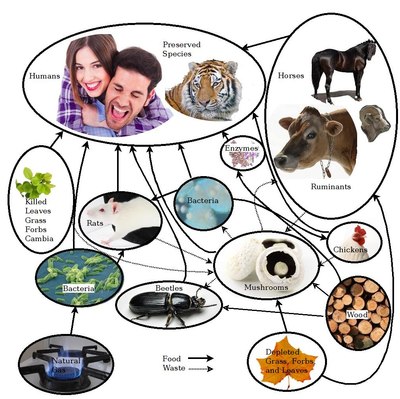
The purpose of this study is to estimate the price and life-saving potential of alternate foods. The sun could be blocked by asteroid impact, supervolcanic eruption or nuclear winter caused by burning of cities during a nuclear war. The primary problem in these scenarios is loss of food production. Previous work has shown that alternate foods not dependent on sunlight, such as bacteria grown on natural gas and cellulose turned into sugar enzymatically, could feed everyone in these catastrophes, and preparation for these foods would save lives in a manner that is highly cost-effective.
Design/methodology/approach
This study estimates the price of alternate foods during a catastrophe in line with global trade and information sharing, but factors such as migration, loans, aid or conflict are not taken into consideration.
Findings
Without alternate foods, for a five-year winter, only approximately 10 per cent of the population would survive. The price of dry food would rise to approximately $100/kg, and the expenditure on this food would be approximately $100tn. If alternate foods were $8/kg, the surviving global population increases to approximately 70 per cent, saving >4billion lives.
Research limitations/implications
A nongovernmental mechanism for coordinating the investments of rich people may be possible. Identifying companies whose interests align with alternate food preparations may save lives at a negative cost.
Practical implications
The probability of loss of civilization and its impact on future generations would be lower in this scenario, and the total expenditure on food would be halved.
Originality/value
Preparation for alternate foods is a good investment even for wealthy people who would survive without alternate foods.
Keywords[edit | edit source]
alternate food; global catastrophic risk; nuclear war; existential risk; economics; food
See also[edit | edit source]

- Feeding Everyone No Matter What - The full book main page
- David Denkenberger and Joshua Pearce, Feeding Everyone No Matter What: Managing Food Security After Global Catastrophe , 1st Edition, Academic Press, 2015
- Free Preview: Google books
- Cover on Academia
- Facebook page
- Alternative Foods as a Solution to Global Food Supply Catastrophes
- Resilience to global food supply catastrophes
- Feeding Everyone if the Sun is Obscured and Industry is Disabled
- Cost-Effectiveness of Interventions for Alternate Food to Address Agricultural Catastrophes Globally
- Feeding Everyone: Solving the Food Crisis in Event of Global Catastrophes that Kill Crops or Obscure the Sun
- Food without sun: Price and life-saving potential
- Cost-effectiveness of interventions for alternate food in the United States to address agricultural catastrophes
- Micronutrient Availability in Alternative Foods During Agricultural Catastrophes
- Preliminary Automated Determination of Edibility of Alternative Foods: Non-Targeted Screening for Toxins in Red Maple Leaf Concentrate
- Open Source Software Toolchain for Automated Non-Targeted Screening for Toxins in Alternative Foods
- Scaling of greenhouse crop production in low sunlight scenarios
- Potential of microbial protein from hydrogen for preventing mass starvation in catastrophic scenarios
- U.S. Potential of Sustainable Backyard Distributed Animal and Plant Protein Production During & After Pandemics
- Global distribution of forest classes and leaf biomass for use as alternative foods to minimize malnutrition
- Long-term cost-effectiveness of interventions for loss of electricity/industry compared to artificial general intelligence safety
- Long term cost-effectiveness of resilient foods for global catastrophes compared to artificial general intelligence safety
- Rapid repurposing of pulp and paper mills, biorefineries, and breweries for lignocellulosic sugar production in global food catastrophes
- Nutrition in Abrupt Sunlight Reduction Scenarios: Envisioning Feasible Balanced Diets on Resilient Foods
- Methane Single Cell Protein: securing protein supply during global food catastrophes
- Killing two birds with one stone: chemical and biological upcycling of polyethylene terephthalate plastics into food
- How Easy is it to Feed Everyone? Economic Alternatives to Eliminate Human Nutrition Deficits
- Quantifying Alternative Food Potential of Agricultural Residue in Rural Communities of Sub-Saharan Africa
- Yield and Toxin Analysis of Leaf Protein Concentrate from Common North American Coniferous Trees
- Toxic Analysis of Leaf Protein Concentrate Regarding Common Agricultural Residues
- Towards Sustainable Protein Sources: The Thermal and Rheological Properties of Alternative Proteins
Additional Information[edit source]
- ALLFED
- Dave Denkenberger Publications
- OSE Wiki "Synfood" (i.e. protein and other dietary components from microbial organisms fed on gas or other hydrocarbons)






